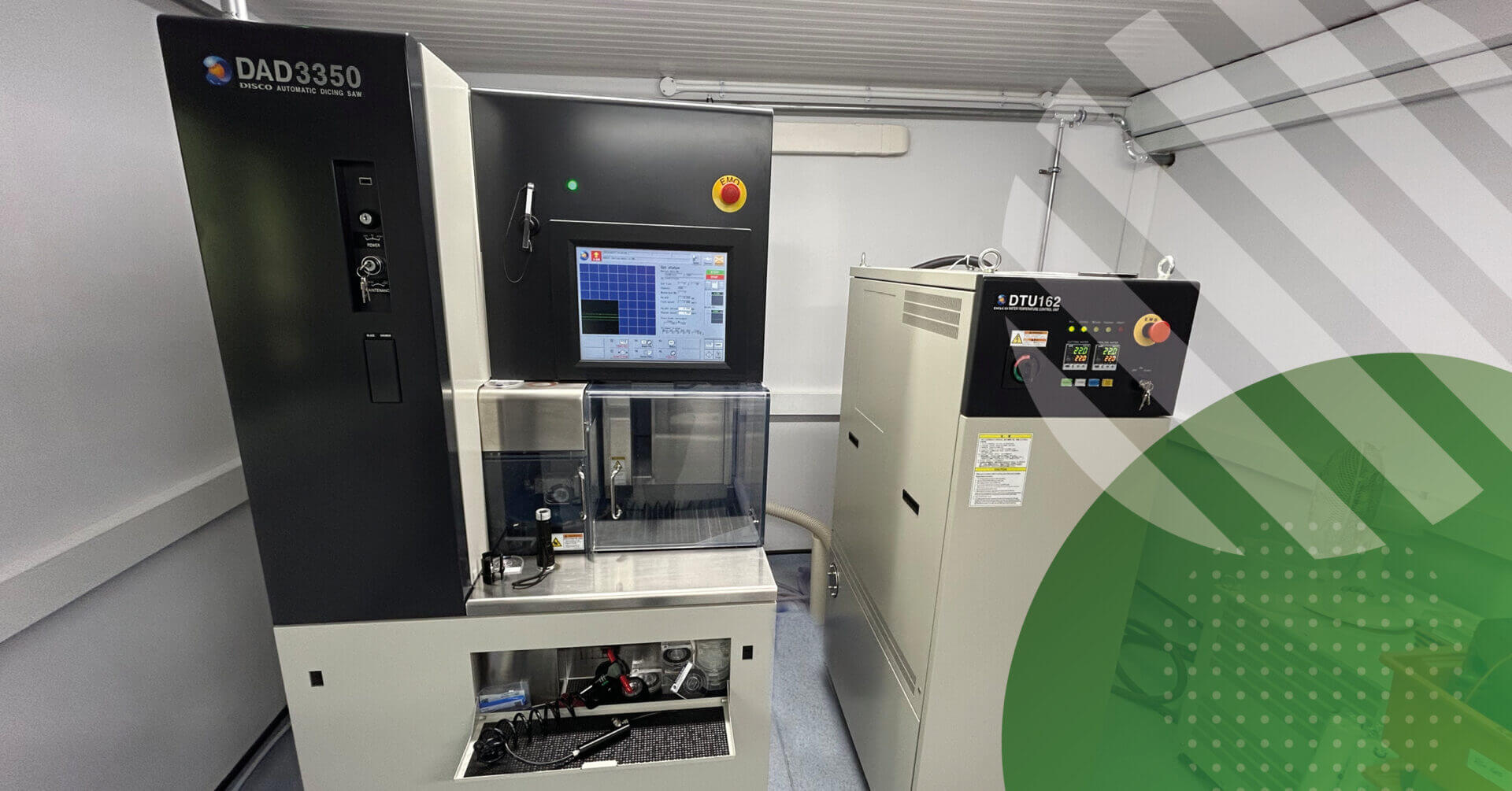For over 70 years, UQG Optics has been a leading manufacturer of high-precision optical components and systems for industries ranging from telecommunications to aerospace. Based in Cambridge, the company prides itself on combining cutting-edge production technologies with a highly skilled team of optical engineers.
Recently, UQG Optics invested in new state-of-the-art micro dicing machines to expand their manufacturing capabilities. We spoke with Kelvin Biggs, Managing Director of UQG Optics, to learn more about this latest enhancement to their production facilities.
What are micro dicing machines and how do they operate?
“Micro dicing machines use precision cutting blades to cut the material or substrates on a tape ring process,” explained Kelvin. “The tape holds the part in place and the blade will cut into the tape, leaving the parts to be delaminated from the tape.”
These advanced machines represent a significant step up in precision and throughput compared to traditional dicing saws. By securing the workpiece to an adhesive tape during cutting, the micro dicing process minimises chipping, cracking and other defects that can occur.
How does adding these machines enhance your production capabilities?
“The machines can cut thousands of finished parts a day from very small plates to larger plates for further processing,” said Kelvin. “They offer an easier way of producing smaller parts, as you can cut larger pieces then produce the final size by cutting it cleanly with the surfaces protected by the tape process.”
UQG Optics invested in two of the industry’s top micro dicing platforms – the Loadpoint and the Disco DAD 3350 Automatic Dicing Saw. Both use specialised blades, high-speed spin rates and precise translation stages to achieve accurate, parallel cutting down to the micron level on even brittle substrates like glass and sapphire.
What prompted the decision to invest in this micro dicing technology?
“We’ve seen increasing demand from current customers needing high precision cutting of their materials, filters and optical components,” Kelvin noted. “There’s also been extra demand for processing finished goods and cutting parts for increased production volumes.”
By automating what was previously a manual, labour-intensive process, the micro dicing machines provide a huge boost in throughput while maintaining the tight tolerances that aerospace, medical and scientific optics applications demand.
What benefits can your customers expect from this production upgrade?
“The added benefit is high quality, repeatable cutting and shorter processing times for faster delivery,” said Kelvin. “We have many years of experience using these machines and can advise on the best dicing parameters to maximise production efficiency while minimising part costs.”
UQG Optics has already utilised their new micro dicing capabilities for customers across diverse fields like fibre optic communications, optical instrumentation and surgical equipment. The improved quality, yield and cycle times have earned rave reviews.
Looking to the future, Kelvin believes optical component manufacturing will continue to push the boundaries of what’s possible:
“Our polishing processes will increase so we can supply the extra diced parts needed. Laser cutting may also evolve to become more widely adapted for precisely cutting various optical materials and components.”
No matter what new technologies emerge, one thing is certain – UQG Optics remains committed to investing in the latest production innovations to better serve their global customer base through enhanced precision, quality and lead times.
If you’d like to find out more, contact our team or call us at 01223 420329 or email our sales team at info@uqgoptics.com.




